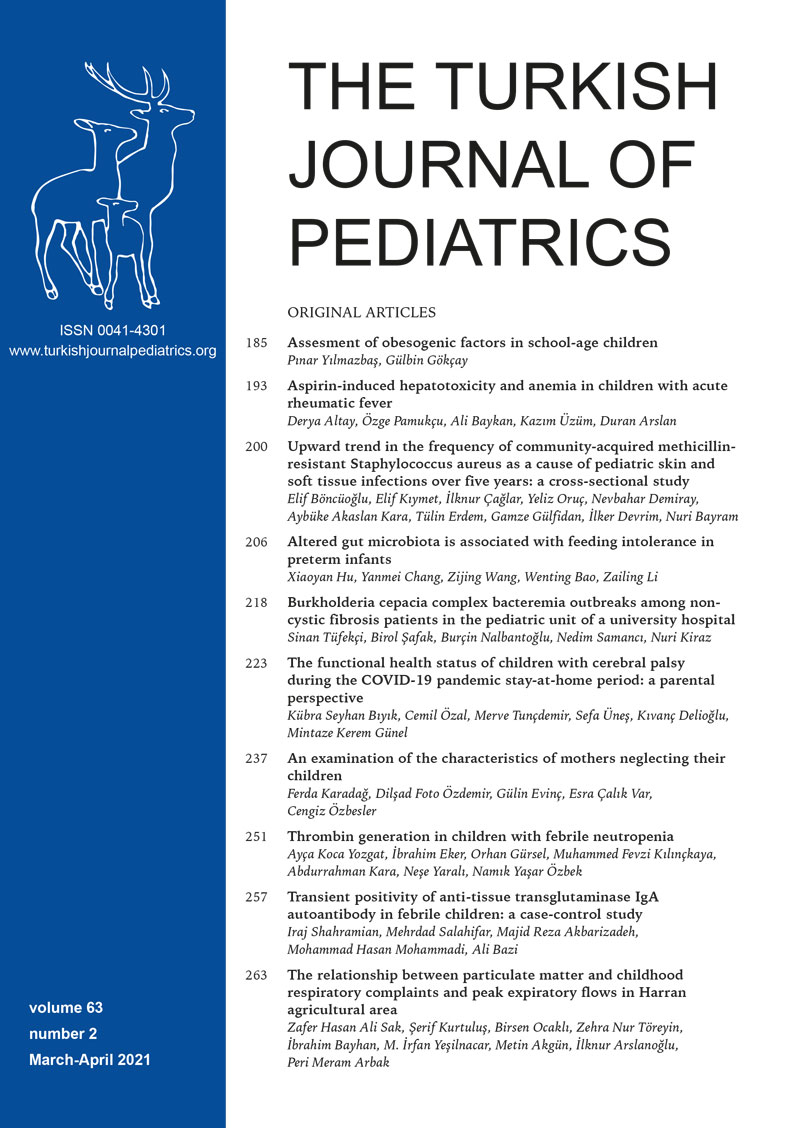Abstract
Background. The prevalence of obesity in childhood is increasing all over the world and the World Health Organization (WHO) regards obesity as one of the most important public health problems. The aim of our study was to investigate the changes in body mass index (BMI) in children between 6 and 11 years of age and to evaluate the factors affecting this change in two different schools.
Methods. We conducted a cross-sectional epidemiological study between January and March 2016 in two different schools. School age children from two different ages (6 and 11 years) participated in the study. Children`s sociodemographic characteristics and daily habits were evaluated by a questionnaire. Weight, height, body fat ratio were measured.
Results. Of all 495 students, 270 were in the 6-year old group. According to BMI classification 21.2% of students were overweight and 14.5% obese. From 6 to 11 years of age percentages of overweight and obese students increased slightly (1%). The mean daily screen time was high among overweight and obese students (p < 0.05). The obesity rate (15.9%) was higher in public school, than in private school (6%). There was an obesogenic environment in the public school; sport facilities were limited, there was a canteen selling junk food and fizzy drink, but there was no free drinking water. Screen times of 11 year-old students were longer, and regular breakfast rates were lower than those of 6 year-old group (p < 0.05).
Conclusions. In our study prevalence of obesity was 14.5%, and overweight was 21.2%. According to our findings obesogenic environment seemed to be a contributing factor of obesity. Screen time should also be considered in attempts to prevent obesity.
Keywords: child, obesity, obesogenic environment, school age
Copyright and license
Copyright © 2021 The Author(s). This is an open access article distributed under the Creative Commons Attribution License (CC BY), which permits unrestricted use, distribution, and reproduction in any medium or format, provided the original work is properly cited.














